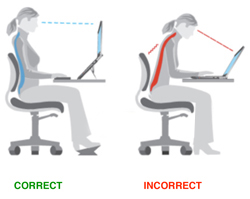Click the frequently asked questions below to reveal the answers.
An initial history and evaluation is needed to determine a treatment plan that is specifically geared to your needs. A treatment plan includes a detailed analysis of your images as well as recommendations for appointment frequency, length of treatment plan, and lifestyle adjustments, including diet and exercise.
These are taken to measure the displacement of the Atlas vertebra in three different planes, from the top, the front, and the side. Limited images are also taken after the first treatment. By comparing before and after treatment images, the precise adjustment that will optimize the healing process can be determined.
Adjustments take a few days to settle in. Allow your body to adapt to these changes. Notice how you feel the second, third, fourth, or even seventh day after the treatment. At every appointment, we check to see if your body is holding its adjustment and then determine the proper amount of care for the future.
Remember that your body is only consciously aware of approximately 10% of its entire nervous system functioning. By receiving an Upper Cervical adjustment, your nervous system is rebalancing itself and this impacts the whole.
Dr. Sarah recommends drinking lots of water. If there is any soreness, you may apply ice to your upper neck for 20 minutes every 2 hours during the day and be sure to relax for that first day after an adjustment.



While Dr. Sarah specializes in Upper Cervical Chiropractic, she is also trained to adjust other areas of the spine and body, including your cranium, hands, feet, shoulders, elbows and knees.
Dr. Sarah will track your progress and re-evaluate within 6 weeks of your first adjustment.
This is a misalignment of the head and neck. Your head weighs about 10-15 pounds and balances on a vertebra known as the Atlas.
Subluxation of the Atlas in the Upper Cervical region affects the body’s neurology. This includes the brain, spinal cord, and complex nerve system of to every muscle, organ, and tissue.
When your Atlas shifts off the center of your spine, your head and neck will become misaligned, which can cause interference to the natural, unimpeded, and healthy flow of your nervous system.
When a patient is under chiropractic care, he/she may experience symptoms that have not been there for months, or even years. We refer to this as “retracing”. Sometimes it may seem a patient is getting worse or developing some new problem; but the patient is actually retracing the several stages through which disease progressed in its making. The symptoms are not new, and neither are they an indication of a return to the old problem. These “retracing symptoms” are an indication that the body is healing and returning to normal function.
If a disease has been in progress for a number of years, we should not expect to regain the normal state within a few days.
Healing takes TIME as well as your active PARTICIPATION.
We do not bill insurance; however, we will gladly provide you with a “super bill” containing all the itemized information and codes necessary for you to submit to your insurance company for reimbursement.
We believe you deserve the best care available. Schilbach Chiropractic make our own decisions about health goals, without interference from any outside sources. No decisions are made on your behalf based upon cost-cutting or someone else’s authorization.
You are responsible for payment to Schilbach Chiropractic. Our office will bill Medicare, and they will determine your reimbursement.
Your first visit includes a complete physical examination, with Orthopedic and Neurologic testing, and Imaging of the Cervical Spine. This first visit cost is $350.
Your Second Visit includes review of your personalized care plan, Upper Cervical correction, and a resting period. The cost is $200.
Ongoing office visits include an evaluation of whether or not you need to be adjusted. These cost $90.
Re-evaluation is scheduled after 6 weeks of care and costs $90.